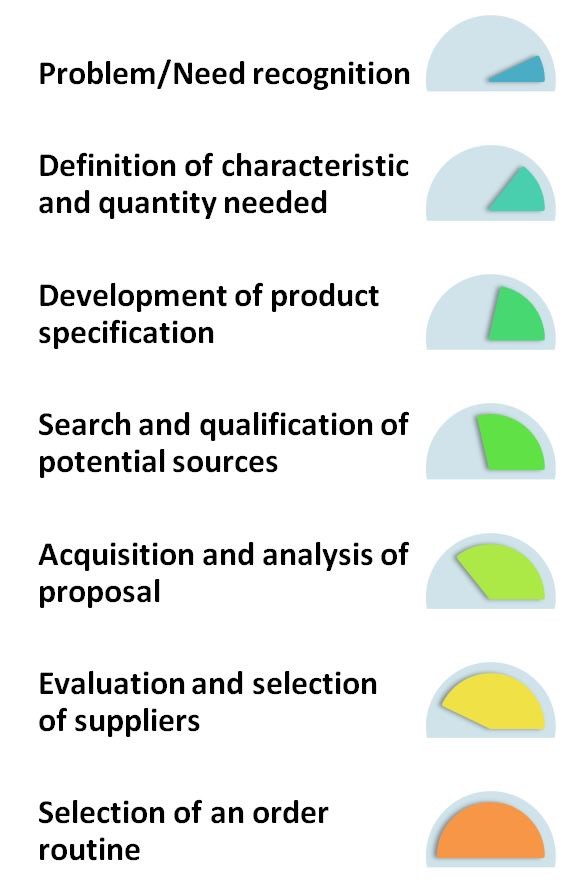Organizational buying process refers to the process through which industrial buyers make a purchase decision. Every organization has to purchase goods and services for running its business operations and therefore it has to go through a complex problem solving and decision making process. The behaviour that the industrial buyers exhibit while making a purchase decision, is known as Organizational buying behaviour and the sequential steps taken by buyers to make a purchase decision is known as organizational buying process.
Steps in Organizational Buying Process
A Buying Centre consisting of members of the organization participate in the purchase process and take relevant decisions according to different buying situations.
Buyers go through the following 8 stages in the organizational buying process –

(1) Problem/Need recognition – It starts with realization of need or problem within the organization. It may be need for a new computers, printers etc. or problem like inventory shortage and under-production which can be solved by procuring more stock and buying new machines in the latter case.
(2) Definition of characteristic and quantity needed – This stage involves clearly defining then the problem in hand and laying down the general characteristics of a product or service that may solve the problem. For e.g. deciding the cost, type, quantity and quality computer, stock or machine to be bought. This may be done by a purchase committee, production manager, technical manager or the top management.
(3) Development of product specification – Once the general specifications have been laid down, the buyers look for information about various product alternatives and lays down well defined product specifications that is to be bought. This is generally done by the department or group or individual who will use or distribute the product. For e.g. an engineer may develop technical specifications of PC`s to be bought or the production manager may take decisions on different items that are to be stocked on the basis of brand, quality, demand of products.
(4) Search and qualification of potential sources – After product specifications have been laid down, the buyers enter the marketplace and make trails and collect samples. Buyers also conduct a value analysis and determine various cost reduction and standardization techniques that will effective solve the problem. The buyers them determine various sellers that have the ability to provide the required quantity and good quality of product needed.
(5) Acquisition and analysis of proposal – This step involves getting quotations from different sellers and floating tenders. The offers received by various parties are then scrutinized against the previously developed criteria and few sellers are shortlisted who can satisfy all requirements.
(6) Evaluation and selection of suppliers – The shortlisted suppliers are then evaluated on the basis of:
- Past reputation
- Quality of product
- Delivery and Payment terms
- Guarantees, Warranties, Discounts, Assurance offered by the seller
- Price of the product
- After sale services etc.
Suppliers are reviewed again and again and then one or more than one supplier may be selected.
(7) Selection of an order routine – At this stage the buyers place the final order with the chosen supplier or suppliers specifying all the technical specifications, quantity needed, expected delivery time, payment and return terms, installation or after sale services etc. required.
(8) Performance feedback and evaluation – The last stage involves deciding whether to re-order, modify the order or drop the seller. The buyers evaluate their satisfaction with the product and the seller(s) and communicate the response to the seller(s). An order schedule is prepared for a month, quarter or year and the organization enters into a contract with the seller.
Previous: Organiational Buying Behaviour Introduction, Buying Centre / Buying Situation
why i am not able to print this document
Hi, To protect our content from misuse, we do not allow users to copy or download content from our website.
However, you can always bookmark (CTRL+D) any webpage of the website for instant access or share any webpage/notes with your friends via social sharing buttons on Facebook, Twitter, Gmail and several other social networks.
If you wish to buy notes from us, you can do so using at our store at: http://store.bbamantra.com/product-category/notes/
Pretty great post. I simply stumbled upon your blog and wanted to say that I have really loved surfing around your weblog posts. After all I will be subscribing for your feed and I’m hoping you write again very soon!